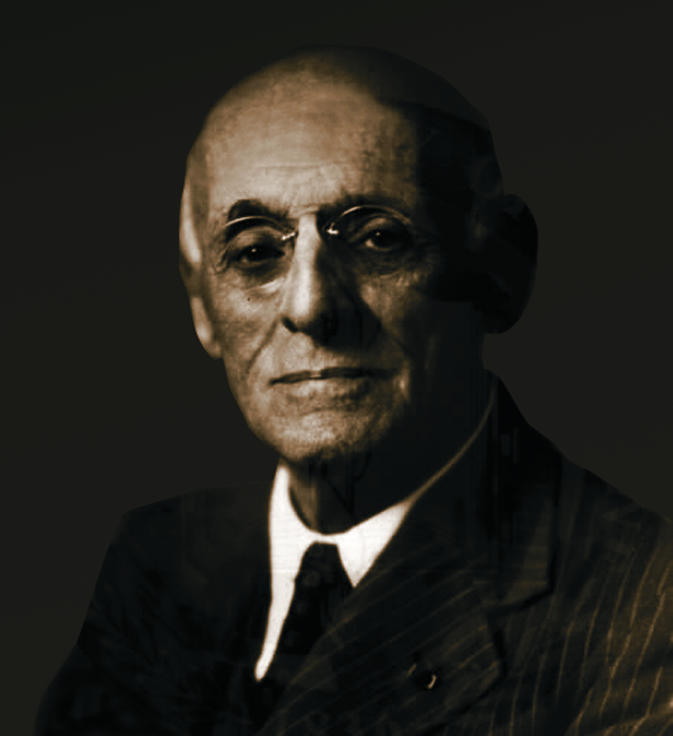 Iconoclast: Abraham Flexner and a Life in Learning by Thomas Neville Bonner. Johns Hopkins University Press, $36, pp 400. ISBN 0 8018 7124 7. To order see www.jhupbooks.com. Rating: ★★★★
Iconoclast: Abraham Flexner and a Life in Learning by Thomas Neville Bonner. Johns Hopkins University Press, $36, pp 400. ISBN 0 8018 7124 7. To order see www.jhupbooks.com. Rating: ★★★★
There have been few famous medical educators since Hippocrates, but Abraham Flexner is probably the best known of the last century. “It was he who defined what a medical school should and should not be,” claims Thomas Bonner in this, the first full biography of a remarkable man.
Flexner was modest. For all that he rubbed shoulders with the Carnegies and the Rockefellers, brought Albert Einstein to America, and worked with the intellectual giants of education and medicine, Flexner was not caught up in the world of heroes-on-pedestals. He was, as Thomas Bonner recognises, a true iconoclast in believing that the reputations of men, institutions, and ideologies were there to be critically examined rather than revered. Bonner's great achievement in this scholarly and captivating book is to model Flexner's critical appraisal skills in writing about him.
Even Flexner himself lacked critical awareness in his autobiography. For all that it was modest, his own version of his life story omitted the pain of rejection and dejection when he didn't come out on top of some of his most bruising encounters. Bonner, on the other hand, offers a gentle and thoughtful appraisal. The elements that contribute to Flexner's greatness—perseverance, vision, clear thinking, and fair mindedness—are all balanced with his weaknesses—an obstinate unwillingness to retract and clouded political insight. We are helped to see how a man with enormous patience, of deep family values, and of liberal persuasions could have at times so lost perspective that he experienced failure and rejection as his misplaced energies worked against his idealism. As his biographer, Bonner is sympathetic to Flexner when facing life's rebuffs, and retains critical awareness when he is riding the crest of a wave.
Flexner defies simple description. Singlehanded, this “master of the survey” reviewed the whole of medical education in the United States, hospital by hospital, class by class, over 18 months, producing a report that has much relevance 90 years later. Nothing daunted, he went on to review medical education across Europe, throwing in the odd commissioned report on the state of prostitution in the world for good measure. The sheer scope of his undertaking, the quality of his writing, the intelligence with which he crafted recommendations, and the vigour with which he pursued them through committee and lobbies make for exciting reading. Exciting but repeatedly thought provoking as, painstakingly, Bonner dissects Flexner's contribution with meticulous scholarship, avoiding all cheap adulation or debunking.
This is an outstanding book, with some memorable quotations. Responding to a faculty whinge that Flexner had spent only one day at a medical school before criticising it, the dean replied, “That is where we were lucky.” Flexner believed that “the same law that protects the public against the unfit doctor, should in fairness protect the student against the unfit school.” Would that our curriculum planners could heed Flexner stating that “a modern school must start from scratch; its curriculum should embrace nothing for which an effective case cannot now be made out.”
For all his high mindedness, Flexner could also be pragmatic at times: “The public must have doctors, good doctors if they are to be had, but doctors in any event.” Perhaps that is a quotation that should be hidden from today's workforce planners in our time of crisis.
Flexner it was who commented that all learning was self learning. Teachers might stimulate or inspire, but “students learn more than they are taught.” In Flexner's view, the medical school couldn't begin to produce fully trained doctors; it could only introduce them to the methods of scientific medicine and thus make them “active learners.” Now that realisation is worthy of fame.
Figure.

NLM
Flexner believed in protecting the student against the unfit school


